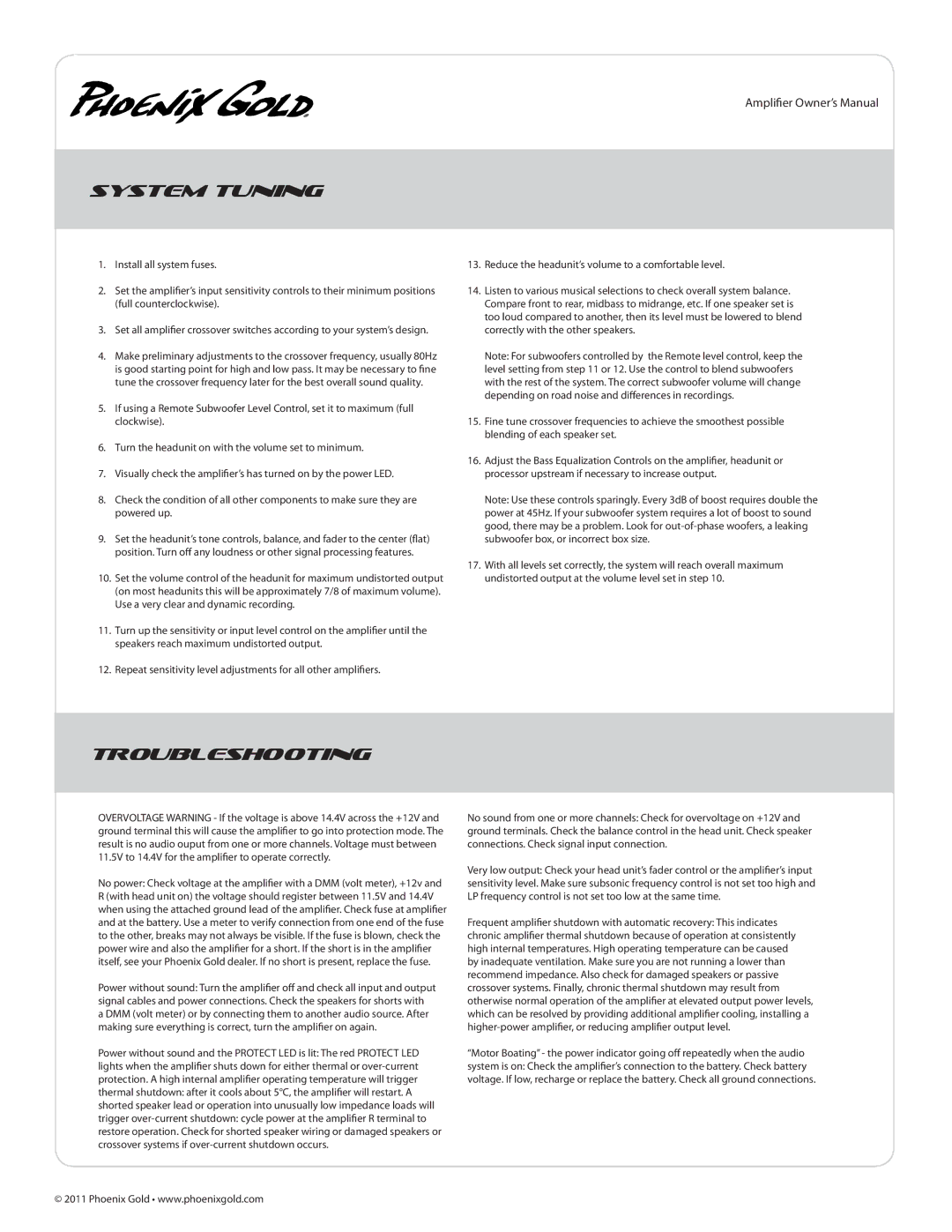SD800.5, SD500.4, SD600.1, SD300.1 specifications
Phoenix Gold is renowned for its high-performance car audio amplifiers, and the SD series, including the SD300.1, SD600.1, SD500.4, and SD800.5, showcases the brand’s commitment to quality and innovation. Each model in the SD series is designed to meet diverse audio needs, ensuring exceptional sound output and reliability.The SD300.1 is a compact yet powerful mono amplifier, delivering up to 300 watts RMS at 1 ohm. This model is ideal for powering a subwoofer, thanks to its efficient Class D design that provides high output with minimal power consumption. Equipped with low and high pass filters, the SD300.1 allows users to customize their sound, ensuring a tailored audio experience.
Next in line is the SD600.1, which offers even greater power, producing up to 600 watts RMS at 1 ohm. This amplifier is perfect for audiophiles looking for deep bass response. Its variable bass boost feature enhances low frequencies, while a sleek design allows for easy installation in a variety of vehicles. The SD600.1 boasts advanced thermal overload and short circuit protection, ensuring durability and longevity.
For those requiring multi-channel options, the SD500.4 is a versatile 4-channel amplifier delivering 125 watts RMS per channel at 4 ohms. This model is ideal for powering both speakers and subwoofers, making it a great option for a complete sound system. Additionally, the SD500.4 features high and low level inputs, expanding its compatibility with various audio sources.
Lastly, the SD800.5 combines the power of both mono and multi-channel amps. With 800 watts RMS, this 5-channel amplifier is capable of powering an entire sound system—subwoofers and speakers alike. The SD800.5's bridgeable channels allow for further flexibility, enabling users to tailor their audio setup to match their preferences. Its compact build and advanced cooling system make it suitable for space-constrained installations while preventing overheating during intense listening sessions.
All amplifiers in the Phoenix Gold SD series emphasize build quality, featuring heavy-duty heat sinks and gold-plated connectors for improved signal transfer. With their cutting-edge technologies and robust features, the SD300.1, SD600.1, SD500.4, and SD800.5 are standout choices for car audio enthusiasts seeking powerful sound enhancement in their vehicles.

